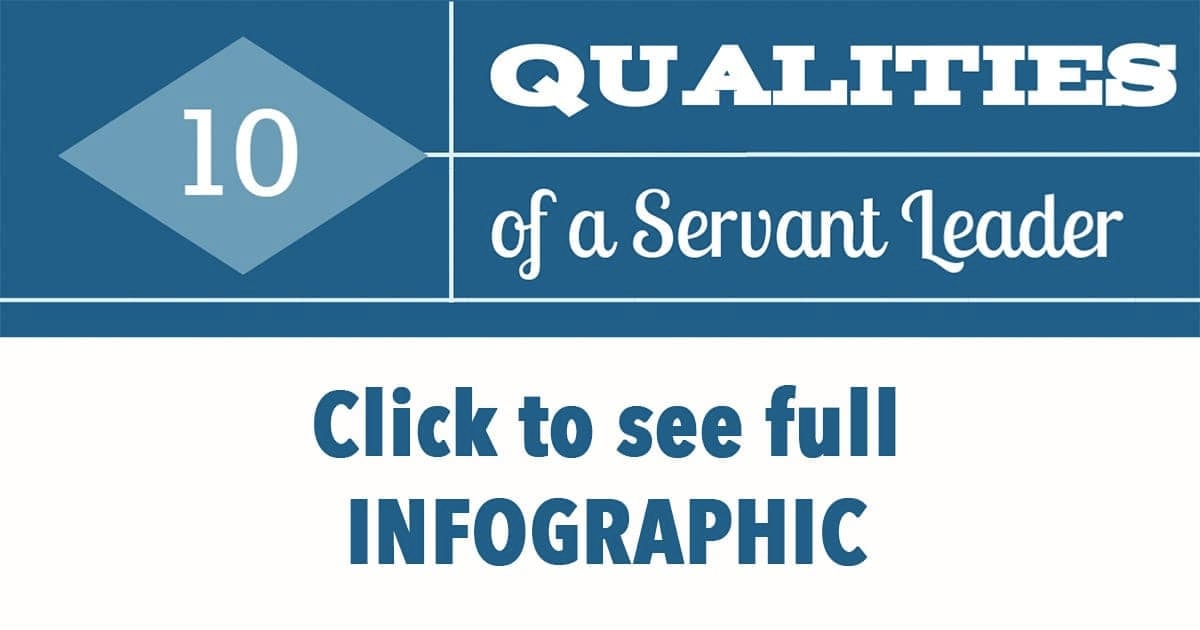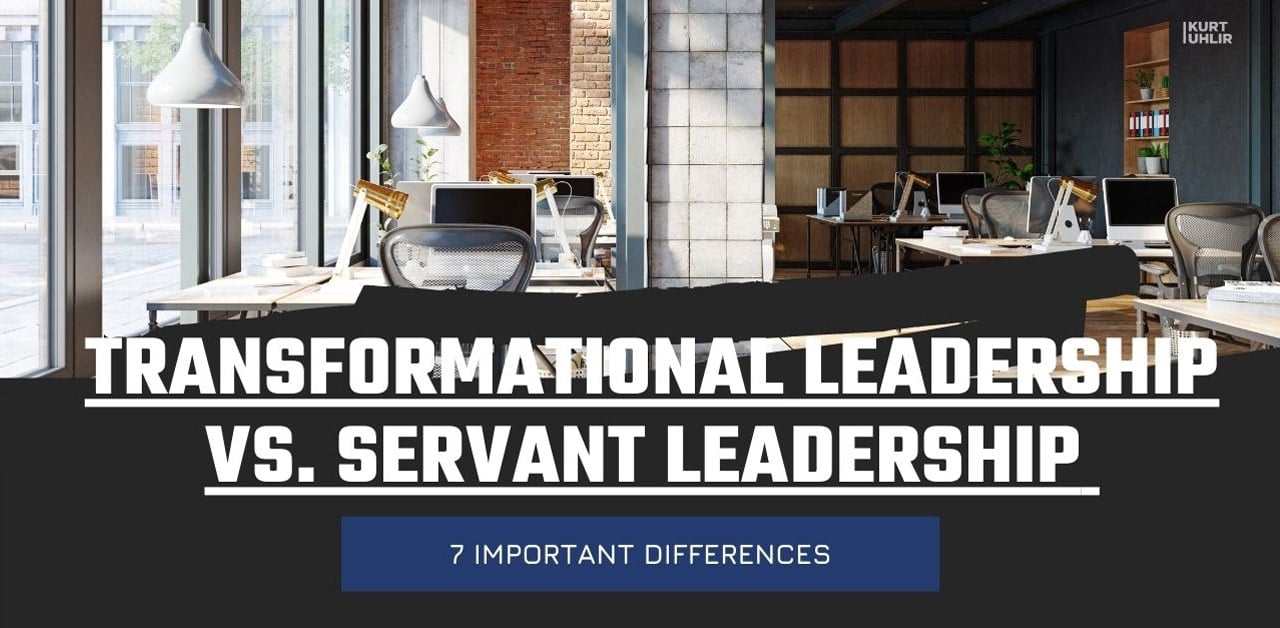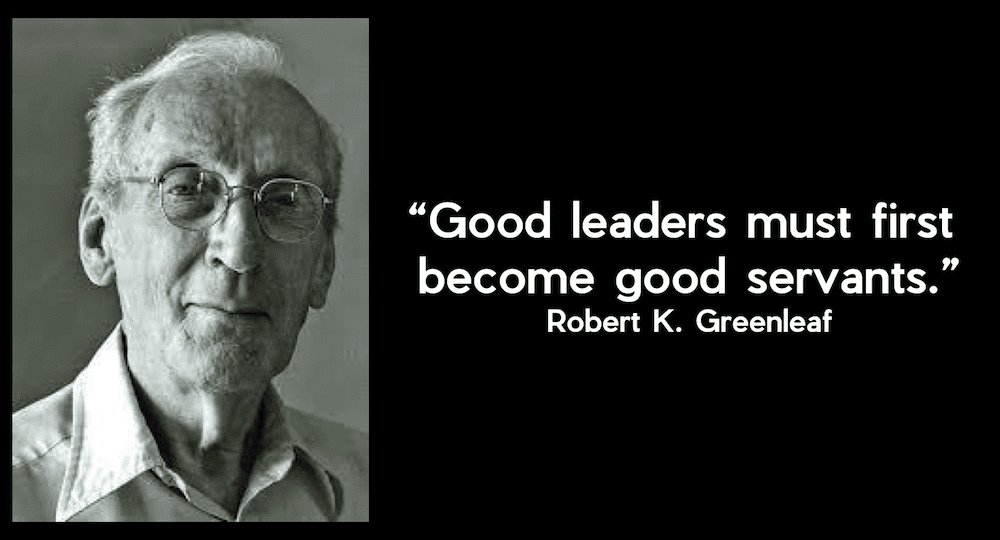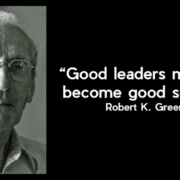Seeing Servant Leadership in Action Through Cheryl Bachelder’s Book Dare to Serve
Table of contents
- Cheryl Bachelder’s Background
- Cheryl Bachelder’s Dare-to-Serve Leader – Who Is It For?
- What Does Cheryl Bachelder’s Book, Dare to Serve, Talk About?
- Servant Leadership Lessons from Cheryl Bachelder’s Franchisee Focused Approach at Popeyes
- Building a Strong Culture
- How To Become a Dare-to-Serve Leader?
- Achieving Excellence
- Next Steps To Unlocking Servant Leadership at Your Company
- FAQs
Have you ever wondered how servant leadership can transform the workplace? At its core, servant leadership is about valuing people and prioritizing their needs as the best way for the organization to fulfill its mission.
In her book Dare to Serve, Cheryl Bachelder provides an in-depth examination of servant leadership and how it can be applied to bring about positive change in organizations.
Through her insightful research, real-life examples, and practical implementation strategies, readers can understand what servant leadership entails and learn how to apply its principles within their workplaces.
I have led teams with thousands of people across six continents, read hundreds of books on leadership, and interviewed hundreds of impressive leaders. Most books on servant leadership do not explain the benefits of implementing it in business or how it impacts the P&L of the company.
Where all but a few of those authors fail, Cheryl succeeds with both the business rationale behind and evidence to back why wise companies are shifting to servant leadership to grow their companies.
Cheryl Bachelder’s Background
Cheryl Bachelder is a renowned business leader with over 35 years of experience in the food industry. Her career is marked by a series of impressive leadership roles, including her tenure as CEO of Popeyes Louisiana Kitchen, Inc. and Interim CEO of Pier 1 Imports. Bachelder’s journey in the corporate world began with significant positions at Nabisco, Gillette, and Procter & Gamble, where she honed her skills and developed a deep understanding of the industry.
Throughout her career, Bachelder has been a staunch advocate of servant leadership, a philosophy that emphasizes the importance of serving others and prioritizing helping them reach the business outcomes they are on the team to accomplish.
Her commitment to this leadership style has not only defined her career but also set her apart as a transformative leader in the food industry. Married and a mother, Bachelder’s personal life reflects the same values of service and dedication that she brings to her professional endeavors.
Cheryl Bachelder’s Dare-to-Serve Leader – Who Is It For?
The book Dare to Serve by Cheryl Bachelder(click the link for a sample chapter) is ideal for leaders looking to adopt a growth mindset based on serving customers, not simply selling to them. Specifically, the book is for individuals who aspire to become great leaders that impact organizations and people.
As Cheryl Bachelder defined it, a “dare-to-serve” leader stands in stark contrast to the traditional top-down management style. Cheryl Bachelder’s extensive career includes her role as Chief Concept Officer at KFC, where she was responsible for brand leadership and concept development.
Rather than seeking to be the center of attention, this type of leader works to share the spotlight with their team. They involve their team members in decision-making and motivate them to achieve audacious goals, all while putting the needs of others first.
Essentially**, they have a rare combination of traits that sets them apart from conventional leaders.**
These leaders can show people how to develop a culture that fosters cooperation, advancement, and worker satisfaction regardless of your position as a leader within your organization or your aspirations to become one.

What Does Cheryl Bachelder’s Book, Dare to Serve, Talk About?
The purpose of Dare to Serve is twofold. Firstly, it provides readers with a comprehensive understanding of what servant leadership truly entails.
Through her detailed explanation of this philosophy, Bachelder explores how prioritizing the needs of others can lead to incredible success in the workplace. I’ve seen this then unlock an inflection point of growth in dozens of companies.
Before officially starting her role as CEO of Popeyes, Cheryl Bachelder decided to attend a franchisee meeting to understand critical issues.
Secondly, the book contains real-life examples from successful companies which have all embraced servant leadership and achieved remarkable results. She exposes but where her teams have gotten it right and where they missed the mark, impacting both growth and culture.
The Power of Servant Leadership
At the heart of Cheryl Bachelder’s leadership philosophy is the concept of servant leadership. She firmly believes that by serving others, leaders can create a positive and productive work environment that drives exceptional results. This approach is not just theoretical for Bachelder; it is a proven strategy that has garnered recognition and praise from industry experts and leaders alike, including Ken Blanchard and Stephen M. R. Covey.
Bachelder’s business style is characterized by a deep commitment to understanding and meeting the needs of her team members. She emphasizes empathy, active listening, and a genuine desire to help others succeed. This philosophy has been instrumental in her ability to turn around struggling companies and lead them to new heights of success. By putting people first, Bachelder has demonstrated that servant leadership is not only a moral imperative but also a powerful driver of business performance.
How To Follow the Path of Servant Leadership
Cheryl Bachelder outlines her philosophy for servant leadership and explains why it works so well. The book provides practical tips and insights on how to implement the principles of servant leadership, including listening skills, empathy, humility, and collaboration.
Bachelder argues that by putting others first and understanding what they really need from the company, leaders can create more engaged teams with higher morale, greater loyalty, and improved performance outcomes.
Real-life Examples of Transforming Declining Businesses
Cheryl Bachelder shares her journey of turning around Popeyes Louisiana Kitchen, the publicly traded restaurant chain, by implementing a servant leadership approach. She brought over $1 billion in U.S. sales to Popeyes, showcasing her effectiveness in driving financial growth.
Bachelder successfully used servant leadership principles to turn around a struggling company. This is a powerful case study that demonstrates the effectiveness of servant leadership. This approach to growth gains further credibility by observing the trajectory of the leaders resulting from this transformation and how they have utilized the philosophy to unlock success in numerous other companies.
She hopes that by sharing her story and insights in the book, more leaders will consider adopting a transformational leadership style and experience similar success in their organizations.
Leaders from various industries and organizations, regardless of their business size and scope, can learn more about servant leadership by reading the book. I think you’ll easily identify ways you could have approached past events differently and how to implement this approach in your current team.
Whether you are a CEO of a large corporation or a small business owner, Dare to Serve can teach you to achieve superior performance by prioritizing the needs of your employees, customers, and stakeholders and achieving better results by serving them.
Dare to Serve outlines the principles of servant leadership and provides concrete examples from successful companies that have adopted this approach.
It shows how taking action, serving others, and using this leadership philosophy can increase average restaurant sales and motivate employees.
Servant Leadership Lessons from Cheryl Bachelder’s Franchisee Focused Approach at Popeyes
Popeyes Louisiana Kitchen started operating in 1972, providing customers with quality fried chicken at an affordable price. By 2007 Popeyes was in deep trouble, with declining sales, profits, and low guest traffic due to poor marketing strategies, lack of innovation, and subpar customer service.
Cheryl Bachelder’s extensive experience in the food industry and her strategic contributions to major food brands like Popeyes and US Foods played a crucial role in the company’s turnaround.
The company’s stock price had also fallen from $34 per share to $13 per share, causing concern among shareholders and investors.
To turn things around, Popeyes needed significant changes to stay competitive in the fast-food industry. Cheryl Bachelder, the new CEO, had to address these challenges head-on and implement new strategies to revive the brand.
Cheryl Bachelder implemented an uncommon approach at Popeyes by adopting a servant leadership style, which aimed to assist franchise owners. This method diverged from the conventional approach that other brands had toward their franchisees. She created an environment of trust and respect by emphasizing listening, team-building, developing employees’ skills and strengths, and inspiring them to achieve their goals.
She encouraged innovation and risk-taking, set clear expectations for performance results, and put herself behind the success of the entire operation in a recipe for success.
She changed how CEOs interacted with employees, mentoring them individually to become better leaders and to better understand her unique business model.
“Every leader is uniquely designed – and they are a function of where they have been working before,” she said.
Through this leadership methodology, she managed to promote personal development, establish solid connections with her staff and franchisers, and nurture a developmental atmosphere throughout the entire brand.
By prioritizing the development of strong connections with her team, she fostered a collaborative environment conducive to Popeyes’ triumph, identifying growth obstacles and data deficiencies as key underlying issues. Despite the economic crisis, by 2015, there was a dramatic turnaround, as Popeyes had seen its market share soar to 24% from 14% and increase its sales by 45%.
This Popeyes Louisiana Kitchen, Inc. story demonstrated how empowering employees with autonomy and providing them with meaningful work can lead to increased engagement and customer satisfaction.
Building a Strong Culture
During her tenure as CEO of Popeyes, Cheryl Bachelder focused on building a strong culture that prioritized the needs of franchise owners and employees. She implemented a franchisee-focused approach, which included regular communication and feedback sessions with franchise owners. This strategy was a departure from the traditional top-down management style and was instrumental in fostering a sense of trust and collaboration within the organization.
Bachelder’s approach was rooted in the belief that franchise owners are critical partners in the success of the business. By actively listening to their concerns and involving them in decision-making processes, she was able to improve relationships and drive business results. This franchisee-focused approach not only enhanced the operational efficiency of Popeyes but also contributed to a more cohesive and motivated workforce. The improvement in franchisee relations was a key factor in the company’s turnaround and long-term success.
How To Become a Dare-to-Serve Leader?
Servant leadership puts the people’s needs in accomplishing their roles first and promotes a teamwork atmosphere where everyone contributes to success.
The advantages of this management philosophy include improved customer loyalty and satisfaction, increased employee involvement, and a better restaurant experience and profitability.
Cheryl Bachelder has provided easy-to-follow guidelines for businesses looking to adopt a servant leadership stance and boost productivity. She has also participated on various company boards, including her role as Lead Director at Chick-fil-A, influencing leadership development across the board.
Passion
The dare-to-serve leader “helps the people visualize a future state, larger than their own imagination, and worthy of desire,” according to Bachelder.
Since it inspires the leader’s desire to serve others selflessly and have a positive impact on the world, passion is essential to servant leadership.
Good leaders inspire and motivate people to work together for a common goal. They use their life experiences to guide them and have a strong desire to make a difference.
Through their passion, servant leaders can inspire and motivate their teams to pursue a worthy goal, even if it seems impossible or challenging.
They help their employees envision a bigger and more significant future than what they may have previously thought was achievable. This vision gives employees a sense of purpose and direction, and it aligns everyone in the organization toward a common goal.
Moreover, a passionate servant leader’s commitment to their vision and their employees drives them to go above and beyond in their service to others. They are willing to work alongside their employees, mentoring and guiding them toward success.
Passion helps servant leaders maintain a positive attitude and persevere through challenges and setbacks. It provides them with the energy and enthusiasm to overcome obstacles and find creative solutions to problems.
By embodying their passion and dedication to their work, dare-to-serve leaders inspire their teams to do the same, leading to higher levels of employee engagement, commitment, and productivity.
Listening
Cheryl Bachelder also believes that to develop a great leader, “I must ask them questions about their values, beliefs, and convictions. Not to judge them, but to provoke them to consider whether their actions are in sync with their words.”
She emphasized the importance of focusing on others rather than herself. In the context of servant leadership, this means placing the needs of one’s team members above your own and empowering them to achieve their goals and aspirations. It means making sure everyone understands how their individual goals and aspirations match up with the mission and desired outcomes of the company.
Listening is a difference maker for a dare-to-serve leader because it enables them to understand the needs and ambitions of their team members fully.
By listening actively and empathetically, a leader can build stronger relationships with their team members and create an environment of trust and respect.
Through active listening, servant leaders can discover their team members’ goals and ambitions, understand their strengths and weaknesses, and identify opportunities for growth and development.
By doing so, they can create personalized plans that help their team members achieve their goals while also aligning with the organization’s mission and vision.
Moreover, by focusing on their team members’ ambitions, a dare-to-serve leader can empower them to take ownership of their work and contribute meaningfully to the organization.
Listening is the secret ingredient that creates a culture of collaboration and innovation where everyone feels valued and motivated to achieve their best.
By focusing on their team members’ goals, servant leaders can create personalized plans that help them achieve their full potential while also aligning with the organization’s vision.
Planning
To become a dare-to-serve leader, it is essential to plan strategically. Leaders must have a clear vision of where they want to take the organization and how to get there.
They need to put themselves on a daring path that sets specific goals and objectives, identifies potential obstacles, and establishes a roadmap for achieving success.
One critical aspect of planning for a dare-to-serve leader is to ensure that the plan aligns with the organization’s values and mission. They should base the plan on a clear understanding of the organization’s strengths, weaknesses, opportunities, and threats.
By doing so, the leader can create a plan that leverages the organization’s strengths, addresses its weaknesses, and aligns with its mission and values.
Another important aspect of planning for a dare-to-serve leader is to involve their team members in the planning process and hold the team accountable to their individual parts in accomplishing that plan.
The leader can tap into their collective knowledge, experience, and creativity to create a more robust and effective plan that has buy-in from team members.
Furthermore, a dare-to-serve leader should be flexible and adaptable in their planning approach. They should be open to feedback and willing to adjust their plan in response to changing circumstances or unexpected challenges.
Planning is critical in becoming a dare-to-serve leader. The leader must create a strategic plan that aligns with the organization’s values and mission, involve their team members in the planning process, and be flexible and adaptable to changes as they arise.
This approach can drive the organization towards achieving its goals while engaging its team members.
Coaching
“Leadership is not about your ambition. It is about bringing out the ambitions of your team,” Bachelder writes. Coaching is a critical principle in developing a dare-to-serve leader who can assist employees in achieving their goals.
Effective coaching necessitates understanding the employees’ strengths, weaknesses, and aspirations to provide tailored guidance and support. Coaching is an ongoing process requiring regular feedback and performance evaluation.
Dare-to-serve leaders give constructive feedback to enable employees to learn and improve while also understanding their strengths and weaknesses.
Additionally, coaching entails offering opportunities for growth and development, as employees are more productive and engaged when given opportunities to learn and develop new skills.
Dare-to-serve leaders provide the necessary resources and support to acquire new knowledge and skills.
When coaching is made a priority, it fosters a culture of continual learning and progress, making employees feel appreciated, reinforced, and confident to take charge of their professional advancement.
The outcome is a high-performing team that is motivated, engaged, and committed to achieving organizational goals. This process makes each employee more valuable to the company and helps the team build momentum and multiply learnings to others.
Coaching entails giving people direction, encouragement, and criticism so they can grow professionally and realize their full potential.
Understanding an employee’s skills, shortcomings, and goals is essential for effective coaching. We do not need to be scared of identifying gaps in knowledge or skills; we all have them. Dare-to-serve leaders offer constructive criticism in a way that helps staff members learn from their errors and advance their careers.
Additionally, they offer chances for improvement and development, fostering a culture of ongoing learning and improvement that encourages employee commitment and excellence.
I find coaching others often leads to some of my deAs a coach, I have come to the realization that regardless of whether I am mentoring a seasoned CEO of a prominent corporation or a group of fresh recruits, I am consistently honing the same skills that I am proposing to them. Much of the advice I offer them is equally applicable to my own progress. Do not shy away from sharing that transparency. In my experience, being vulnerable and transparent with those I coach helps teach and build the relationship.
Accountability
Dare-to-serve leaders must prioritize accountability as a key principle in leadership. To do so, they must create a culture of ownership and responsibility, where individuals are held accountable for their actions and decisions.
Weak leaders consistently let commitments and deadlines slip. What is sometimes viewed as being flexible is actually teaching numerous things that are opposite of what the person intends to teach. I’m a huge proponent of agile work environments. Agile businesses consistently reassess and iterate on previous work. It is not a “pass” to accountability.
Leaders must model this behavior themselves by taking responsibility for their mistakes and being transparent about their decision-making processes.
Creating a culture of accountability also involves setting clear expectations and goals. Dare-to-serve leaders must communicate their expectations to their team members and ensure that they understand what is expected of them.
Accountability includes setting achievable goals and providing the necessary resources and support to help employees achieve them. Leaders must be open to hearing from their team if they do not feel they have the necessary resources to reach the goal within the timeline too.
Leaders must also provide regular feedback and performance evaluations to ensure that employees are meeting expectations.
They must praise good performance and address any issues or areas for improvement in a timely and constructive manner. By doing so, they can help employees to grow and develop in their roles.
However, dare-to-serve leaders must also remember that accountability must be balanced with empathy and compassion. As Bachelder notes, “Efficiency with people ruins relationships.“
Although responsibility should be enforced, leaders should acknowledge that errors occur and provide assistance to enable their staff to learn and develop from them.that your team should understand and model to others on the team.
They must be willing to listen to their team members’ concerns and needs and work with them to find solutions that benefit both the individual and the organization.
Accountability is an essential path to achieve success. You must instill a sense of ownership and responsibility in your team’s culture, set precise objectives and expectations, and offer frequent feedback and performance assessments. Seek to strike a balance between accountability and grace.
By prioritizing accountability, dare-to-serve leaders can create a high-performing team that is motivated, engaged, and committed to achieving organizational goals.
Humility
Cheryl Bachelder emphasizes the real difference humility plays in becoming a dare-to-serve leader. A humble leader does not seek the spotlight and instead listens carefully to their team.
They involve their team members in decision-making and make decisions that prioritize the needs of the team, including their personal lives. They also give credit to others for their contributions.
According to Bachelder, a leader must have both courage and humility. They should, “Have the courage to take their team to daring destinations and the humility to selflessly serve others on the journey.”
A dare-to-serve leader recognizes that they are not the sole source of wisdom and expertise. They value the insights and perspectives of their team members, and they leverage them to make better decisions.
During my podcast appearances, I often discuss an activity where I challenge myself to identify three areas in my business/relationship where I may currently be mistaken.
From looking back over the years, I can almost guarantee there are at least three things that I’m wrong about in my business right now, as I’ve repeatedly discovered things throughout the years. Being right and being wrong feel exactly the same until you realize that you are wrong. Acknowledging your search for misconceptions or outright incorrect beliefs will make you more open to hearing from others too. They may have the correct answer, or they may ask that unlocks new knowledge.
When leaders are humble, they prioritize their team members’ needs and create an environment of collaboration and respect.
Servant leaders cultivate an atmosphere of trust and transparency by proactively encouraging the input of their team. This ensures constructive criticism and a chance for personal growth both in your team and yourself.
Ultimately, this shared sense of purpose and commitment to common goals leads to greater engagement, innovation, and success for the organization.
Humble leaders are not afraid to admit their mistakes, seek feedback, and learn from their team members. By doing so, they foster an environment that encourages growth, development, and continuous improvement.
Achieving Excellence
Under Cheryl Bachelder’s leadership, Popeyes achieved significant improvements in sales, profitability, and customer satisfaction. The company’s stock price quadrupled during her tenure, reflecting the remarkable turnaround she orchestrated. Bachelder’s leadership style and approach to business have been recognized and praised by industry experts and leaders, solidifying her reputation as a transformative leader.
Bachelder’s focus on developing employees’ skills and strengths, inspiring them to achieve their goals, and encouraging innovation and risk-taking created a culture of collaboration that enabled the company’s success. Her clear expectations for performance results, coupled with the support she provided to help her team achieve those objectives, were key drivers of the company’s impressive performance.
The recognition Popeyes received as one of the top franchise partners in the restaurant industry is a testament to Bachelder’s effective leadership. Her ability to build strong relationships with her team members and create an environment of trust and respect was instrumental in fostering a successful and sustainable organization. Today, Bachelder continues to be a sought-after speaker and author on business topics, sharing her insights and experiences with leaders around the world.
Next Steps To Unlocking Servant Leadership at Your Company
Reading Cheryl Bachelder’s book Dare to Serve is a remarkable turnaround story and a great way to gain insight into servant leadership in action.
Learn the principles of servant leadership by observing how they are put into action by others, and you will be well on your way to becoming a leader who can implement them effectively throughout your organization.
Servant leaders inspire their team members by putting people first and making sure everyone’s needs are met while striving for excellence. You can do this too, regardless of whether you are a sole contributor or lead an entire company.
With this knowledge, you can create an environment that encourages collaboration, creativity, and success – all through the power of service-mindedness.
For more information and insights about servant leadership, check out more of my articles and resources on the topic. They can help you improve your leadership skills and become a more effective leader both at work and home.
FAQs
Let’s take a look at some of the most commonly asked questions about Cheryl Bachelder’s book and servant leadership.
What are the main principles of servant leadership?
The welfare and growth of followers within the organization are the main priorities of servant leadership. This approach to leadership places a strong emphasis on teamwork, trust, empathy, and moral conduct to foster an environment where everyone can flourish in their roles.
Leaders give direction and guidance, acting more as facilitators than dictators.
Empathy: The ability to understand and share the feelings of others, being able to see things from their perspective. Caring for the welfare of those around you through providing guidance and assistance as needed.
Servant Mentality: Striving to serve rather than be served, always putting others’ needs before your desires or goals.
Growth Mindset: Believing in continuous improvement while encouraging everyone around you to reach their full potential through collaboration and trust-building. This often happens through activities like coaching and mentoring.
Find a servant leadership infographic here.
How can one broaden their set of leadership communication styles?
One can broaden their set of leadership communication styles by actively seeking out new opportunities to practice and refine their communication skills.
Seek feedback from colleagues, take courses or workshops on effective communication, and study the communication styles of successful leaders.
Be sure to conduct self reviews of recordings of you talking in different environments. If you are able to record video of you speaking. First, listen to the audio only to see what you notice that could be improved. Next, watch with the sound turned off. Finally, watch and listen to the talk.
It can be helpful to experiment with different approaches and techniques, such as active listening, open-ended questioning, and using nonverbal cues to convey empathy and understanding.
By continually learning and growing as a communicator, you can develop a more diverse and effective set of leadership communication styles.
Is Cheryl Bachelder’s leadership style the best?
Servant leadership can be a successful approach for leaders who prioritize the well-being of their team and aim to cultivate an environment of collaboration and mutual esteem as the best approach to reach to company’s desired outcomes.
Servant leadership can be highly beneficial in organizations that have a robust culture driven by a clear mission. When employees are passionate about their jobs and seek to feel appreciated and guided, this approach can prove invaluable. Cheryl Bachelder has been profiled in prominent outlets like the Wall Street Journal and the New York Times, emphasizing her significance and influence in the restaurant industry.
Ultimately, the best leadership style is one that is embraced by those in authority. If you feel the need to be in control or micromanage, this is a time for self reflection to understand why. Sometimes your team may need more direct coaching and you working alongside of them. Is that the case or is it something else?
What did Cheryl Bachelder do for Popeyes Louisiana Kitchen and Foods Holding Corp?
Cheryl Bachelder transformed Popeyes Louisiana Kitchen by adopting a leadership style that emphasized trust, respect, and team-building.
Prior to her role as CEO of Popeyes, Bachelder held a leadership position at KFC and had an extensive background in various significant companies, showcasing her qualifications and the trajectory of her career.
Through her focus on developing employees’ skills and strengths, inspiring them to achieve their goals, and encouraging innovation and risk-taking, she created a culture of collaboration that enabled the company’s success.
Bachelder set clear expectations for performance results while providing support to help her team achieve those objectives.
By building strong relationships with her team members, she created an environment of trust and respect that helped to foster a successful and sustainable organization.











